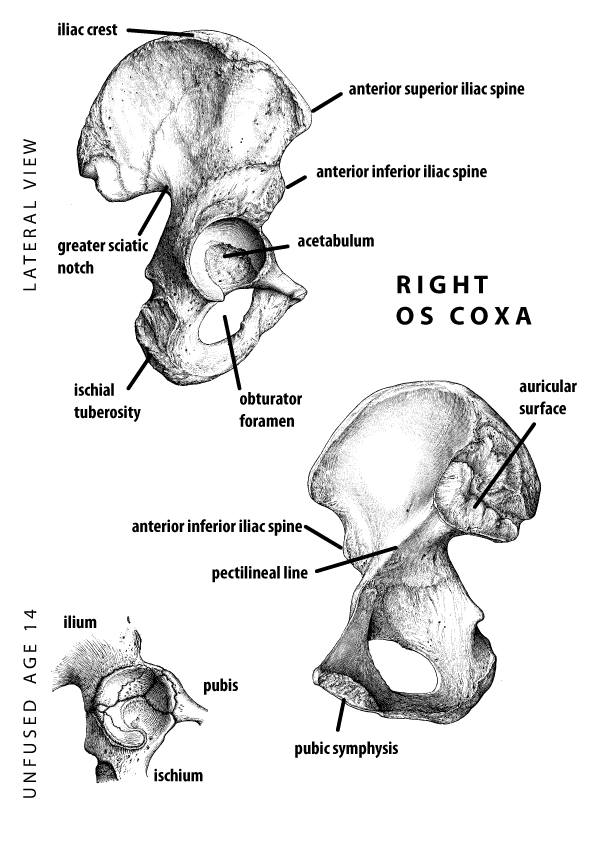Virtual lab: Bones and anatomy of the pelvis
The pelvis is a complex made of three bones: the sacrum and the left and right os coxae, also called "innominate" bones. The sacrum forms the posterior part of the pelvis, and is made up of fused vertebrae. Many primates have a tail extending from the end of the sacrum; humans and apes have only a small number of tiny vertebral bodies, called the coccyx, or "tailbone."
The innominate bones (os coxae) make up the sides and the front of the pelvis. Each innominate bone is itself composed of three fused bones:
- Ilium. The largest part of the innominate bone, this forms the upper blade, which flares outward to make a bowl-shaped cavity supporting the abdominal organs.
- Ischium. The ischium is the most inferior part of the pelvis, the part that most primates sit on.
- Pubis. The pubis is in the front of the pelvis. The two pubes meet at the midline at the pubic symphysis.
The three bones meet in the center of the socket for the hip joint, called the acetabulum. The bones fuse together during childhood, so that adults do not have any marking showing the boundaries between them.

- The human bone models in this virtual lab are based on scans of osteological specimens in the Biological Anthropology collection of UW-Madison.
Materials in this lab
Back to full list of virtual labs